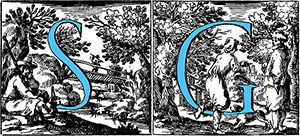
Van DYCK Anthony
(Antwerp 1599 – London 1641)
Flemish painter, draftsman and engraver, expecially known as an author of portraits. Seventh son of a wealthy merchant, after a period of apprenticeship at the workshop of the painter Hendrick van Balen dean of the Guild of San Luca, at only seventeen he already had his own studio.
When Van Dyck opened his painter’s workshop, a new style was born, the Baroque. Pieter Paul Rubens, the principal master of Van Dyck, was a very authoritative exponent of this new style that he also transmitted to his students.
From his early works, Anthony showed a vigorous style, probably influenced by the works of Rubens, a friend as well as a teacher, to which he managed to add a wise and balanced use of light. During this period he performed some religious works in the city of Antwerp, just regained by Roman Catholicism. After a brief period in London around 1621, he went to Italy remaining for some time in Genoa. The Italian period constituted an important phase of in-depth study and improvement in its artistic career. Here he had the opportunity to see and copy some great Renaissance works, especially of his favorite painter, Titian.
In the portraits of the Genoese period he could attribute to the characters an emblematic social meaning, expressed with attention to the details of the costumes, giving elegance and dignity to the subjects also through the setting.
In just one year he portrays the major exponents of the aristocracy and the nascent mercantile bourgeoisie.
He became the portrait painter not only of the Genoese aristocracy and of other Italian cities, but also of the Flemish and English one. In 1632 he went back to London, where he remained, almost uninterruptedly, as a court painter of Charles I. His extensive English production is dedicated almost exclusively to portrait. In the graphic field he designed, around 1626, a work entitled “Iconography” which had to include portraits of the most important artists and personas of Europe living between the 16th and 17th centuries. It had a first edition, before 1645, including a series of eighty engraved portraits, all drawn by Van Dyck, but only eighteen engraved directly by him.
In London he married an English noblewoman and died a few days after the birth of his daughter, just 42 years old.

